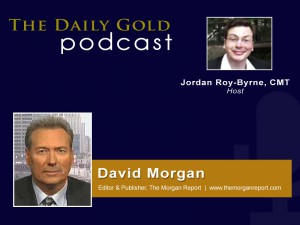Inflation is a Contrarian Bet
Chart 1: Inflation surprise index could actually “surprise” on the upside
Source: Citigroup Research
Whether you ask the politicians, policy makers, central bankers, economists, financial advisors, investment bankers, market gurus, financial journalists, bloggers, pit traders or your next door neighbour (and his dog) – the overwhelming majority of them will tell that they either do not see any inflation coming or that the major worry right now is deflation.
The chart above, known as the Citigroup Inflation Surprise Index, is showing that we entered 2014 with one of the most negative surprise levels since 1998. It is important for traders and investors alike to understand that the index has very close correlation to Crude Oil prices (as well as the overall commodity index).
Therefore, the index can be used as a contrary indicator or a sentiment gauge. Once it gets too low, usually commodity prices rally and with them the CPI levels rise and visa versa. Note that Crude Oil prices bottomed in 1998, 2001, 2006 and 2009; while they also peaked in 2000, 2005, 2008 and 2011. With the inflation expectations currently at ridiculously low levels, it is my opinion that contrarians should expect an upside surprise.
Chart 2: Managers extremely bearish on commodities, despite break out
Source: Short Side of Long
The recently published February Merrill Lynch Fund Manager Survey, seen in Chart 2, shows continuous bearish positioning by global managers towards commodities. Merrill Lynch observes that a net 23% of investors are currently underweight commodities, which is only a slight improvement from net 31% underweight in December 2013. Current readings in exposure are extremely under-owned at 1.7 standard deviations below its decade long average.
At present, the situation resembles that of late 2008, when just about every fund manager (and policy maker) was extremely pessimistic on commodities and inflation right before prices bottomed out and rallied powerfully in coming quarters.
During late 2008, deflation was also a major consensus outlook, while just about every market participant saw no inflation risks on horizon. Interestingly, in the January and February ML surveys, when asked about the biggest tail risk for the global economy, managers answered“China hard landing and/or collapse in commodity prices”. And yet, technically the commodity index is breaking out on the upside. Moreover, only abut 5% of fund managers are currently worried about inflation risks.
Chart 3: Christine Lagarde Warns Officials to Fight Deflation in 2014
Source: Bloomberg
Deflation worries truly became a consensus outlook in early 2014, just as the IMF director Christine Lagarde spoke at the National Press Club in Washington (video link here). She strongly encouraged policy makers to fight deflation, which she viewed as a major threat for developed economies in 2014. Could we actually see a totally opposite outcome surprise us in 2014? Please note that the policy makers from the Fed to ECB and from the World Bank to the IMF are notoriously famous for being awful at timing trends in the economic activity and financial markets.
Therefore, it does not surprise me one bit that the commodity prices have started breaking out on the upside. The money printing experiment, undertaken by the Federal Reserve and many other global central banks, has never been tried before. How will it end? None of us are really sure of that. However, if the inflation was to surprise the markets to the upside, forget about stocks because historically commodities have always been the best hedge against inflation.









